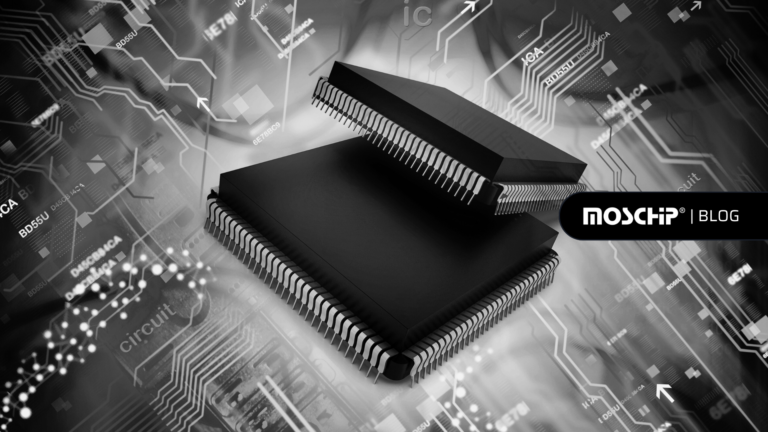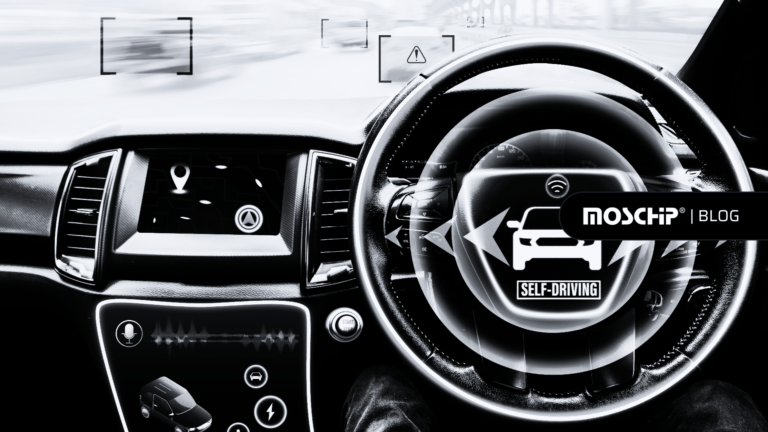Enabling IoMT for Personalized Smart Healthcare
The Internet of Medical Things (IoMT) revolutionizes healthcare by seamlessly integrating wireless medical devices and applications with IT systems. This interconnected ecosystem enhances communication between medical devices and healthcare providers, leading to real-time monitoring, improved patient engagement, and streamlined workflows. As healthcare continues to evolve towards a more technology-driven approach, the relevance of IoMT becomes increasingly apparent, facilitating advanced medical solutions and enhancing the overall quality of care. IoMT introduces personalized smart healthcare, customizing medical services based on individual patient needs. Healthcare providers create tailored care plans that adjust to patient characteristics and behaviour by using data from various monitoring devices.
IoMT enables personalized healthcare by connecting devices that gather and transmit patient health data, helping healthcare providers gain insights, track treatment effectiveness, and adjust care plans in real time. Wearables monitoring vital signs allow doctors to customize medications, suggest lifestyle changes, and intervene promptly. As per Fortune Business Insights, the global IoMT market size was USD 60.03 million in 2024 and is projected to be USD 814.28 billion by 2032 at a CAGR of 38.5% during the forecast period.
Understanding IoMT
The Internet of Medical Things (IoMT) refers to the interconnected network of medical devices and applications that collect, transmit, and analyze health data through the Internet. It encompasses a variety of devices including wearables, remote patient monitoring tools, and smart medical equipment like infusion pumps, robotic surgical systems, enabling seamless communication between patients, healthcare providers, and medical facilities.
As IoMT systems grow, addressing data security and privacy concerns becomes crucial to protect sensitive health information from cyber threats. The evolving landscape of IoMT promises significant advancements in healthcare delivery, but it requires the development of robust cybersecurity measures and regulatory frameworks to ensure safe and effective use. Ensuring interoperability between diverse medical devices and systems will also be vital to maximize the potential of connected healthcare ecosystems.
Overview of the Technology Infrastructure Supporting IoMT
The Internet of Medical Things (IoMT) integrates medical devices and applications to enhance healthcare delivery. Its technology infrastructure comprises several key components:
- Connected Medical Devices and Sensors
Medical devices and sensors link to create smart healthcare systems for continuous, real-time monitoring using advanced biosensors (Optical Biosensors, Capacitive Biosensors, etc.) in wearable/implantable devices for precise vital parameter tracking and early anomaly detection. Remote tools securely transmit patient data to cloud platforms for seamless health center to patient communication. AI-driven diagnostic devices (Digital Pathology, portable AI Ultrasound device, AI-enhanced ECG device, etc.) improve test accuracy, aiding clinical decision-making. Integration of sensors ensures effective monitoring without disrupting daily activities, leading to better patient outcomes and personalized care.
- Communication Protocols and Network Connectivity
IoMT devices use IoT protocols like Bluetooth, Zigbee, Wi-Fi, LoRaWAN, and 5G for efficient and secure data transmission. Protocol choice depends on factors such as range, speed, and power usage. Low-power wide-area networks like LoRaWAN suit implantable devices, while 5G supports real-time data streaming for remote medical purposes.
- Interoperability and Standards
The IoMT ecosystem thrives on the seamless interaction between diverse devices and systems. Standardized protocols, such as HL7 and FHIR, ensure interoperability, allowing devices from different manufacturers to communicate effectively. This standardization enables healthcare providers to access and integrate data across platforms, improving diagnostic accuracy and care coordination.

Technology Infrastructure Overview supporting IoMT
- Edge Computing and Cloud Integration
IoMT systems utilize edge computing for fast data processing near the source. Edge computing reduces latency for critical applications like emergency alerts and remote diagnostics. Processed data is then sent securely to cloud platforms for storage, advanced analytics, and interoperability. Cloud integration enables large-scale data aggregation and AI-driven predictive analytics for health trend insights.
- Data Management and Storage
Efficient data management is critical to IoMT. The vast amounts of data generated by IoMT devices require scalable storage solutions, often provided by cloud services. Advanced database systems ensure that data is organized, accessible, and ready for analysis. Real-time processing capabilities combined with historical data storage allow for comprehensive health insights and detailed studies.
Personalized healthcare tailors medical care to individual patient characteristics, integrating genetic, medical, lifestyle, and environmental information for customized health plans. Traditional healthcare uses a “one-size-fits-all” model, often overlooking unique patient circumstances. Personalized healthcare recognizes individual variations in disease susceptibility and treatment response, enhancing medical intervention effectiveness.
Advances in technology, like genomic sequencing and data analytics, are driving a shift towards personalized treatment strategies that offer deeper insights into patient health profiles and support precise clinical decision-making.
How IoMT enables Personalized Smart Healthcare
By leveraging IoMT, healthcare providers can harness real-time data, do predictive analytics, and tailor solutions, ensuring a patient-centric approach that enhances both outcomes and experiences. Here’s how IoMT is transforming personalized smart healthcare:
- Data Collection: The Foundation of Smart Healthcare
IoMT enables continuous and real-time data collection from a wide array of devices such as wearable sensors, remote monitoring systems, and implantable technologies. These devices track vital parameters like heart rate, blood pressure, glucose levels, and physical activity. For instance:
- Wearable Devices: Fitness trackers and smartwatches provide insights into daily activity levels and sleep patterns.
- Remote Monitoring Systems: Devices like glucometers and blood pressure monitors automatically transmit data to healthcare platforms.
- Implantable Sensors: Implantable sensors are small devices placed inside the body to monitor vital health metrics like heart rate, oxygen levels, and glucose in real-time. They wirelessly send data to healthcare providers for continuous monitoring and timely medical interventions.
- Data Analysis and Predictive Analytics: Transforming Insights into Action
IoMT utilizes advanced analytics and machine learning for healthcare data processing, turning raw data into actionable insights and predictive models such as logistic regression, decision trees, and random forests for forecasting health events. Time-series analysis methods like ARIMA and LSTM track patient vitals for anomaly detection. NLP analyzes clinical notes for diagnosis, while clustering algorithms (like K-means and DBSCAN) group patient data for personalized care, and reinforcement learning optimizes treatment plans. Edge analytics and federated learning enhance decision-making for proactive interventions and personalized care, providing actionable insights and predictive capabilities, allowing for:
- Early Diagnosis: Identifying potential health issues before they become critical.
- Risk Stratification: Categorizing patients based on risk levels for more focused interventions.
- Treatment Optimization: Customizing treatment plans based on individual responses and medical history.
For example, predictive analytics can analyze patterns in a diabetic patient’s glucose levels, alerting healthcare providers to potential complications and suggesting preventive measures.
- Patient-Centric Care with Tailored Treatment Plans
The integration of IoMT into healthcare delivery fosters a shift towards patient-centric care by personalizing treatment plans and improving patient engagement. Key contributions include:
- Remote Patient Monitoring: Patients with chronic conditions can manage their health from home, reducing hospital visits.
- Virtual Health Assistants: AI-driven assistants provide personalized health advice and reminders.
- Behavioral Insights: IoMT devices analyze lifestyle patterns to recommend tailored wellness programs.
This approach ensures that healthcare is not only reactive but also proactive, focusing on prevention and continuous care.
Ultimately, IoMT transforms healthcare by enabling proactive personalized care by seamlessly integrating medical devices and wearable sensors for continuous monitoring, data-driven insights, and tailored treatment plans. It enhances patient outcomes, healthcare experience, and access to care, marking a shift towards patient-centric healthcare delivery. MosChip excels in delivering IoMT-driven personalized healthcare solutions by integrating advanced technologies such as embedded AI, IoT, edge computing, and secure connectivity into medical devices and systems. MosChip provides design and development services for wearables, monitoring devices, and remote diagnosis platforms to medical device manufacturers and healthcare system providers.
Author
-
Darshil is a Marketing professional at MosChip creating impactful techno-commercial writeups and conducting extensive market research to promote businesses on various platforms. He has been a passionate marketer for more than four years and is constantly looking for new endeavors to take on. When He’s not working, Darshil can be found reading and playing guitar.









IoMT’s potential to provide personalized, real-time care is exciting! However, with all the data being transmitted, how do you think healthcare systems can address the security and privacy concerns of patient health information?